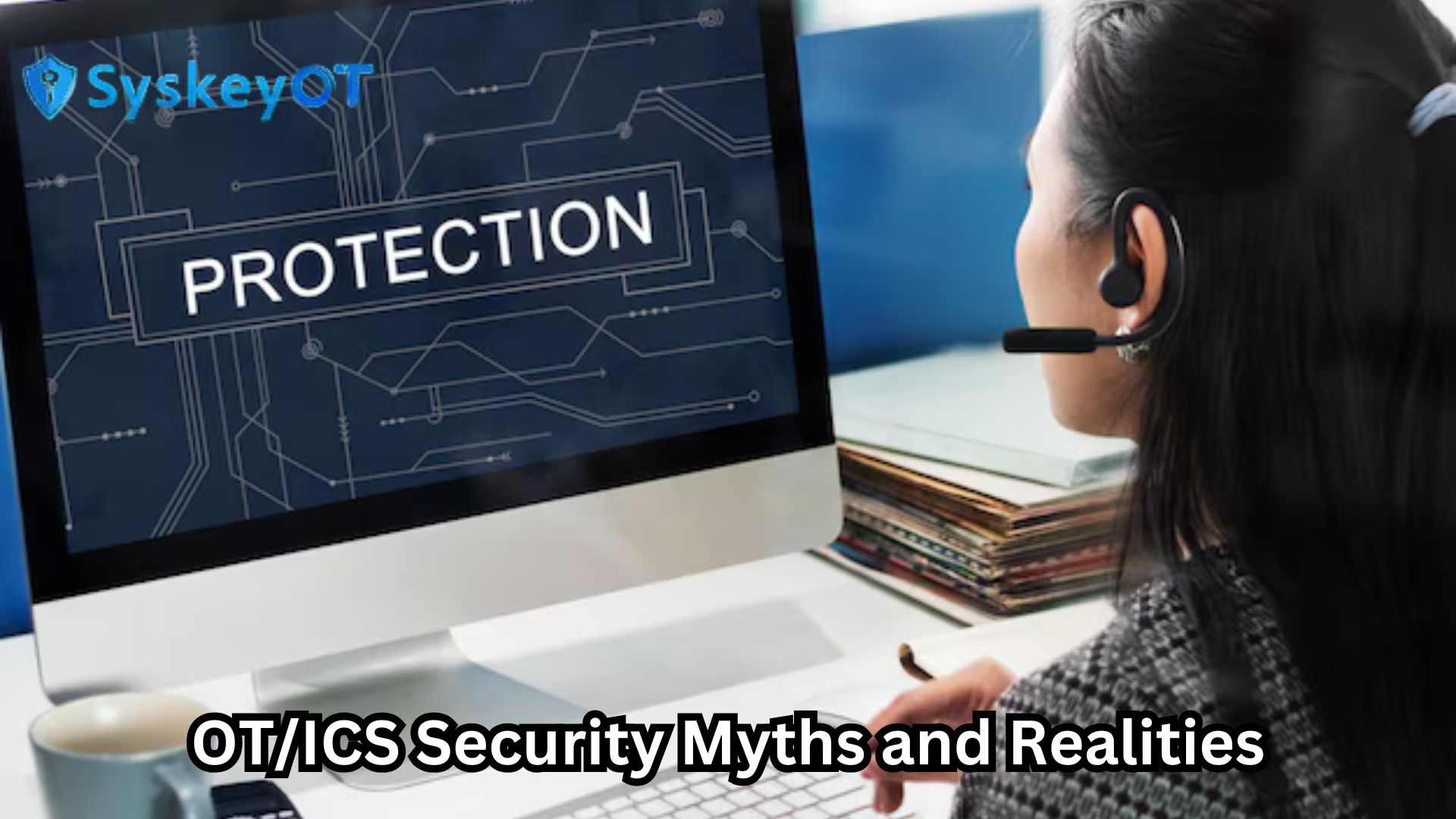Operational Technology (OT) and Industrial Control Systems (ICS) play a crucial role in industries such as Energy/Power & Water, Oil & Gas, Manufacturing, Transportation, Telecommunications & etc. However, many organizations operate under outdated security assumptions that create a false sense of protection. This leaves critical infrastructure vulnerable to cyber threats such as ransomware, insider attacks, and sophisticated malware. To build a truly secure environment, it is essential to debunk common OT/ICS security myths and realities and adopt a proactive approach to cybersecurity.
OT/ICS Security Myths and Realities
Myth 1: “Air-Gapping Ensures Absolute Security”
A widely held belief is that air-gapping, physically isolating OT/ICS networks from the internet, makes systems completely immune to cyber threats. While air-gapping may reduce certain risks, it does not provide absolute security.
Air-gapped networks are rarely as isolated as organizations assume. Employees may unknowingly introduce malware through infected USB drives, while contractors and maintenance personnel might connect compromised laptops to the network. Additionally, modern OT systems often require some level of connectivity for data analysis, remote monitoring, or operational efficiency, inadvertently bridging the air gap. The Stuxnet attack on Iran’s nuclear facility is a prime example of how an air-gapped system can still be compromised. The malware spread through infected USB devices, bypassing physical isolation, and causing significant operational disruptions.
SyskeyOT’s Scribbler Log Manager helps organizations mitigate risks by continuously monitoring system logs and identifying security incidents, even in air-gapped environments.
Myth 2: “Security by Obscurity Keeps Systems Safe”
Some organizations believe that hiding system details, using proprietary protocols, or limiting public knowledge about OT networks can protect them from cyberattacks. This approach, known as security by obscurity, is not an effective defense against determined attackers.
Cybercriminals are highly skilled at reverse-engineering protocols, analyzing system behavior, and exploiting known vulnerabilities. Many OT/ICS protocols, such as Modbus, DNP3, and IEC 60870-5-104, are publicly documented, making it easier for attackers to study and manipulate them. Furthermore, insider threats can expose sensitive information, negating any security gained through obscurity.
SyskeyOT’s Central Cockpit provides a unified interface for monitoring and managing OT assets and networks, streamlining visibility across single or multi-site deployments.
Myth 3: “Legacy Systems Are Not Targeted by Attackers”
Many organizations assume that their older OT/ICS environments are not of interest to cybercriminals. However, outdated systems often present an even greater risk due to their lack of modern security features.
Legacy OT systems are highly vulnerable because they frequently run outdated operating systems that no longer receive security updates. These systems may have unpatched vulnerabilities that attackers can easily exploit. Many industrial environments still rely on Windows XP, Windows 7, or outdated Linux distributions, which have long been discontinued and are no longer supported. Cybercriminals actively target such environments because they offer weak defenses and are difficult to upgrade without operational disruptions. The WannaCry ransomware attack in 2017 exploited outdated Windows systems, affecting major manufacturers like Nissan and Renault.
SyskeyOT addresses this challenge by integrating seamlessly with legacy systems using protocols designed for OT environments. Tools like the Scribbler Log Manager provide centralized log management, enabling real-time monitoring of even older systems.
Myth 4: “No Attacks Means We Are Secure”
A dangerous assumption many organizations make is that if they have not experienced a cyberattack, their systems must be secure. However, the absence of a detected attack does not mean one has not occurred.
Cyber threats constantly evolve, and attackers often remain undetected for extended periods before launching an attack. Ransomware groups and Advanced Persistent Threats (APTs) may infiltrate a network and lie dormant for weeks or even months before executing their malicious activities. Research from IBM’s X-Force Threat Intelligence Index suggests that attackers typically dwell within networks for an extended period before launching a full-scale attack.
SyskeyOT’s Scribbler Log Manager A centralized log management solution for OT/ICS cybersecurity, helping organizations monitor security logs and maintain compliance with industry regulations.
Myth 5: “IT Security Measures Are Sufficient for OT/ICS”
Some organizations believe that traditional IT security tools, such as antivirus software and firewalls, can adequately protect OT/ICS environments. However, OT and IT environments have fundamentally different security requirements.
IT security primarily focuses on data confidentiality, whereas OT/ICS security prioritizes system availability and operational safety. Applying standard IT security measures in an industrial setting can lead to unintended disruptions. For instance, automatic patching, a common IT practice, can halt an entire production line if not managed carefully. The WannaCry ransomware attack demonstrated how unpatched Windows vulnerabilities could disrupt global industrial operations, including manufacturing plants. Additionally, the Triton malware attack in 2017 targeted safety instrumented systems in a Saudi Arabian petrochemical plant, proving that traditional IT security tools are insufficient for OT environments.
SyskeyOT’s Asset Manager enables organizations to manage and secure OT assets efficiently, ensuring that security updates are applied in a controlled manner without causing unexpected downtime.
Strengthening OT/ICS Security with Proactive Measures

To protect critical infrastructure, organizations must move beyond outdated beliefs and adopt a proactive, multi-layered approach to security. Addressing OT/ICS security myths and realities requires the implementation of key strategies, including:
- Conducting regular risk assessmentsto identify and mitigate vulnerabilities before attackers exploit them.
- Implementing network segmentationto separate IT and OT environments, reducing the attack surface.
- Establishing strong access controls, including multi-factor authentication (MFA) and role-based access restrictions.
- Developing incident response plansto ensure quick containment and recovery in the event of a security breach.
- Providing cybersecurity trainingfor employees and contractors to improve security awareness and reduce the risk of human error.
Conclusion
Relying on outdated OT/ICS security myths and realities can put industrial control systems at serious risk. Cyberattacks on OT/ICS environments are increasing, and organizations must shift from a reactive approach to a proactive, fact-based security strategy. By implementing robust cybersecurity measures and leveraging industry best practices, companies can protect their critical infrastructure, prevent costly disruptions, and mitigate cyber threats effectively.

